Nature has a way of hiding its most fascinating creatures in plain sight. In the forest, some animals have mastered the art of camouflage, blending seamlessly with their surroundings. They use their unique adaptations to hide from predators or ambush prey. Let’s take a closer look at a few of these extraordinary masters of disguise.
Leaf-Tailed Gecko
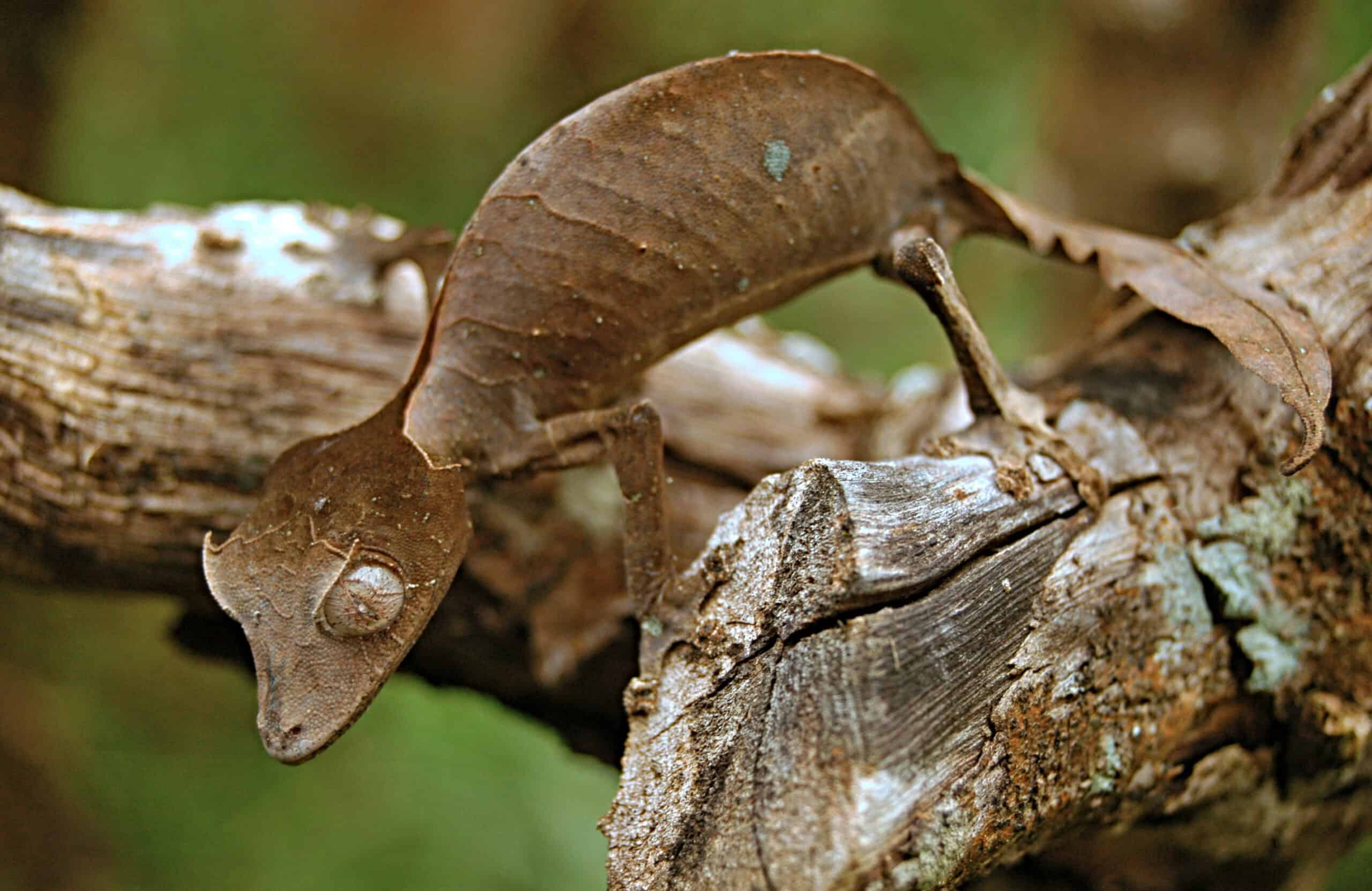
The Leaf-Tailed Gecko is an expert in blending into its environment. Its body resembles a dead leaf, complete with veins and a rugged texture. This reptile can flatten itself against tree bark, disappearing into its surroundings. Its colors range from brown to green, adding to its camouflage. With its wide, flat tail resembling a leaf, it can avoid predators easily.
Pygmy Seahorse

Though typically associated with the ocean, the Pygmy Seahorse is a tiny master of disguise. It clings to soft corals that look almost identical to its body. Its bumpy texture and color match its surroundings perfectly. Measuring less than an inch long, it’s hard to spot even by keen observers. This camouflage helps it avoid predators and blend into its delicate coral home.
Malaysian Horned Frog
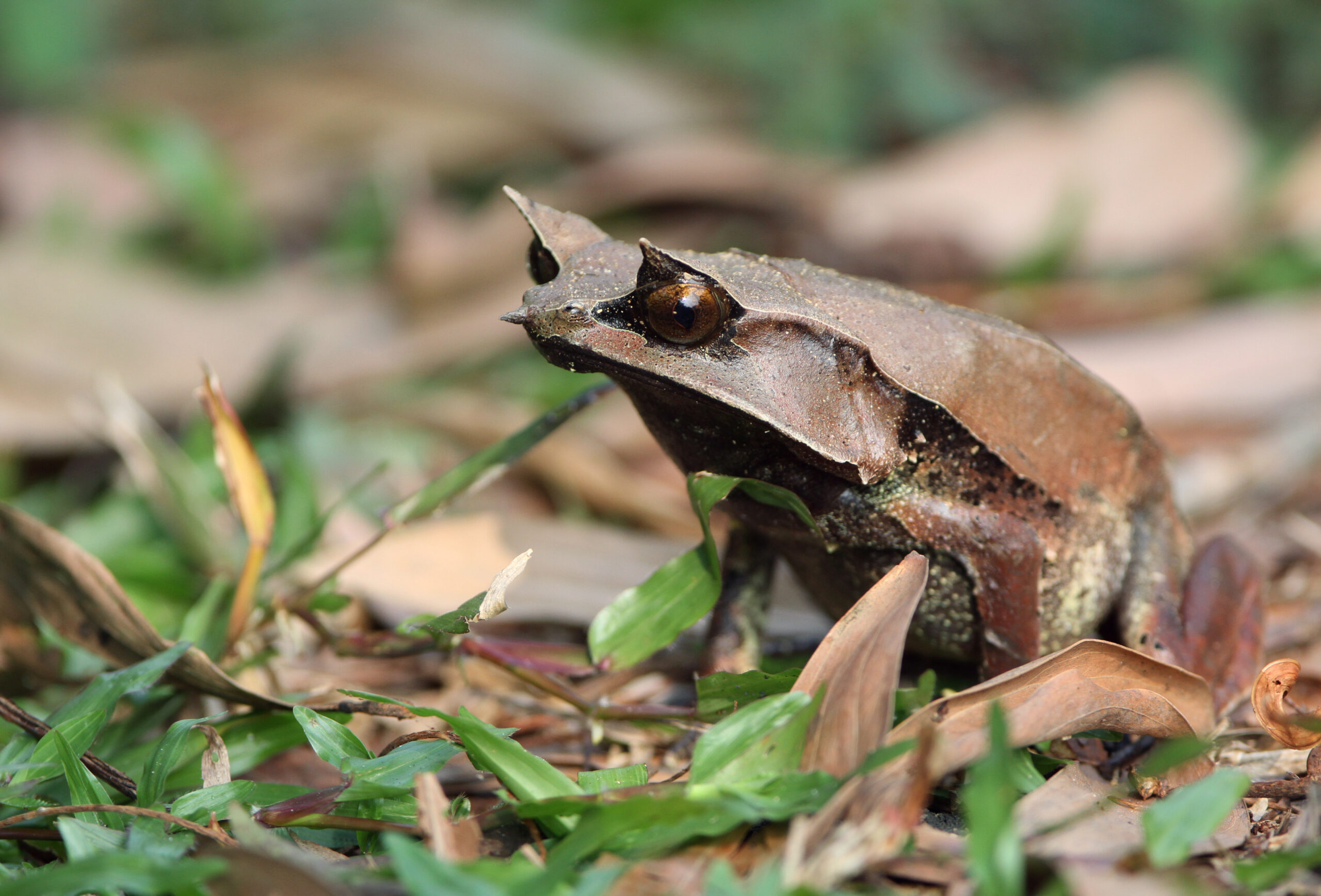
The Malaysian Horned Frog is named for its horn-like projections above its eyes. These “horns” help it look like fallen leaves on the forest floor. Its mottled brown and tan skin allows it to hide among leaf litter, waiting to ambush prey. This frog remains motionless for hours, relying on patience and camouflage for hunting.
Vietnamese Mossy Frog
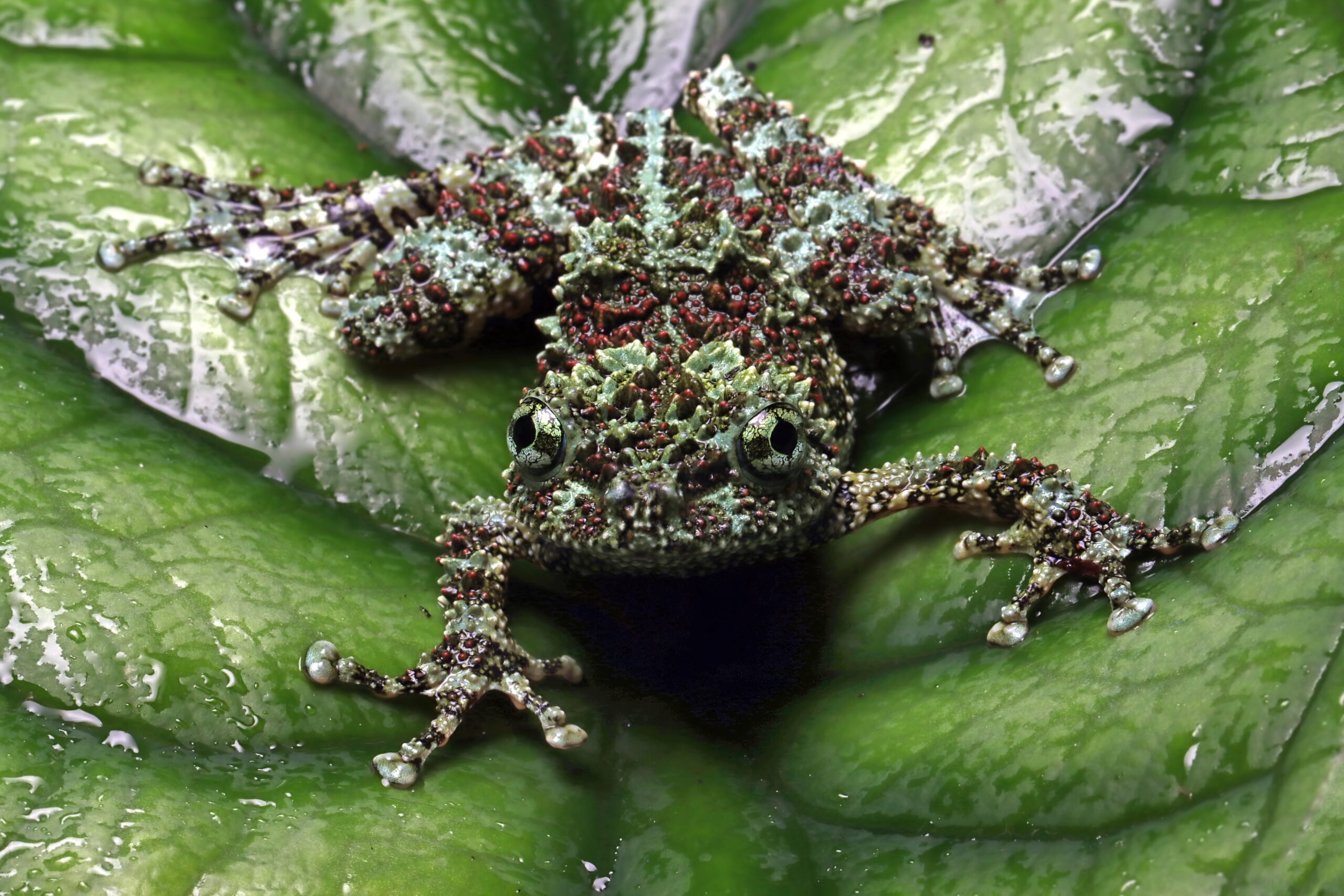
With its bumpy, moss-like skin, the Vietnamese Mossy Frog is almost impossible to detect. It lives in rocky, moss-covered environments where it blends perfectly. The green and black mottled patterns on its body mimic the look of wet moss. It can remain hidden for long periods, making it difficult for predators to spot.
Ghost Mantis
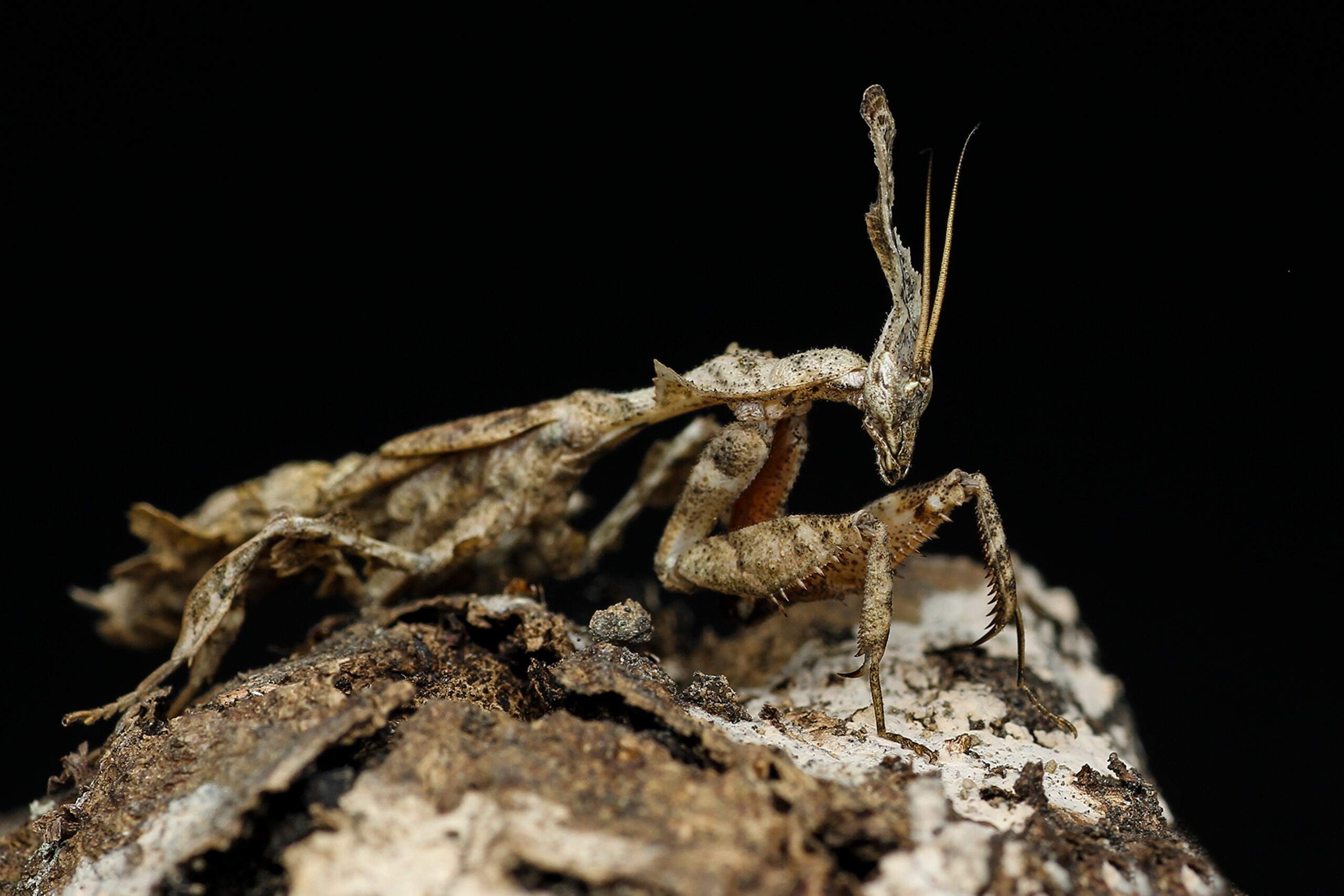
The Ghost Mantis is an insect that perfectly mimics dry leaves. Its body has a twisted, crumpled appearance, just like a decaying leaf in the wind. It sways slightly to imitate a leaf’s natural movement, adding to its disguise. The brownish, earthy color further helps it blend into its surroundings. This camouflage makes it a skilled hunter, waiting for prey to pass by.
Stick Insect
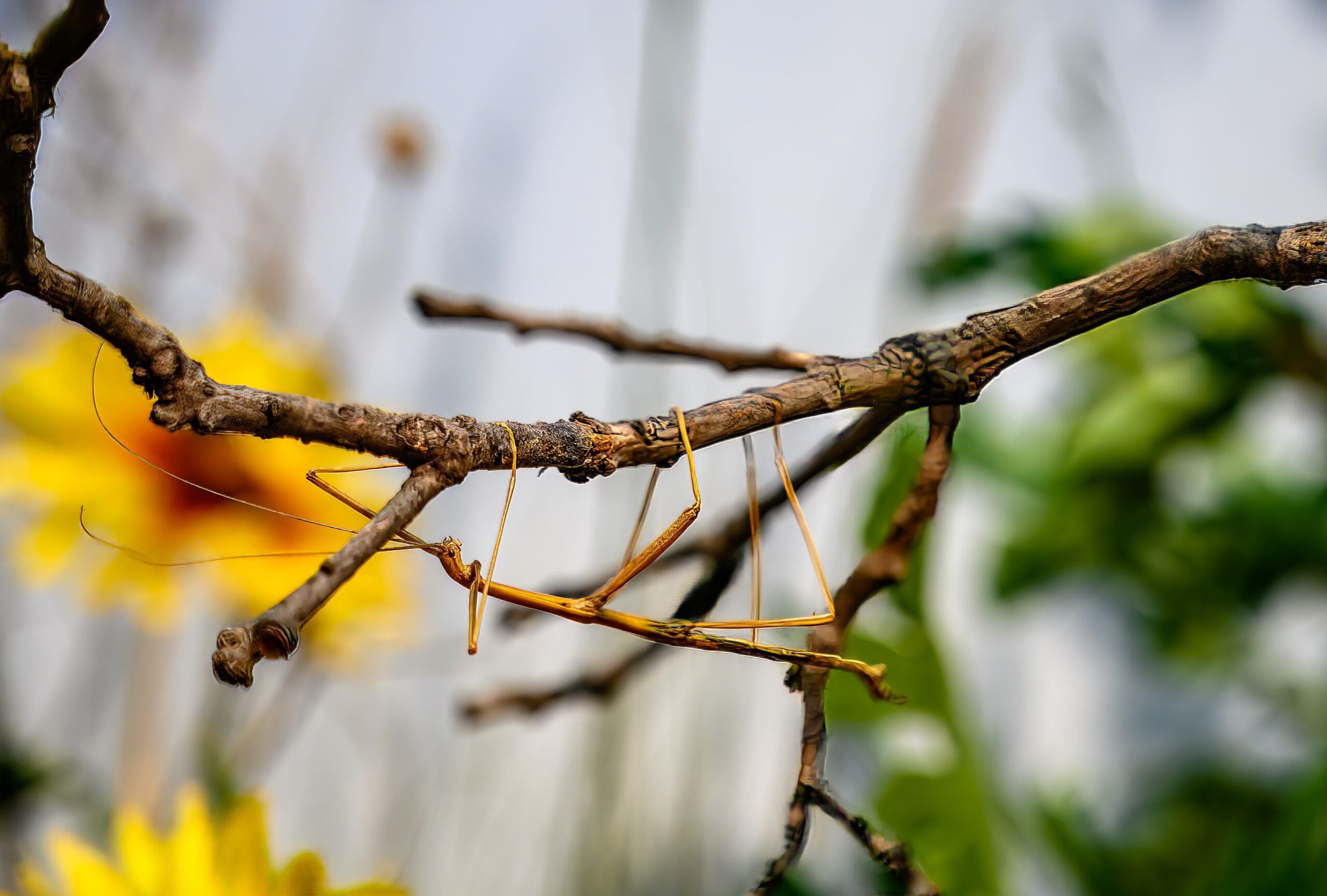
The Stick Insect is one of the best examples of camouflage in the animal kingdom. Its body is long and thin, resembling a twig or branch. With shades of brown or green, it blends seamlessly with trees and bushes. Stick insects remain still for long periods, avoiding detection by predators. Even when they move, their gentle swaying resembles a branch blowing in the wind.
Great Horned Owl
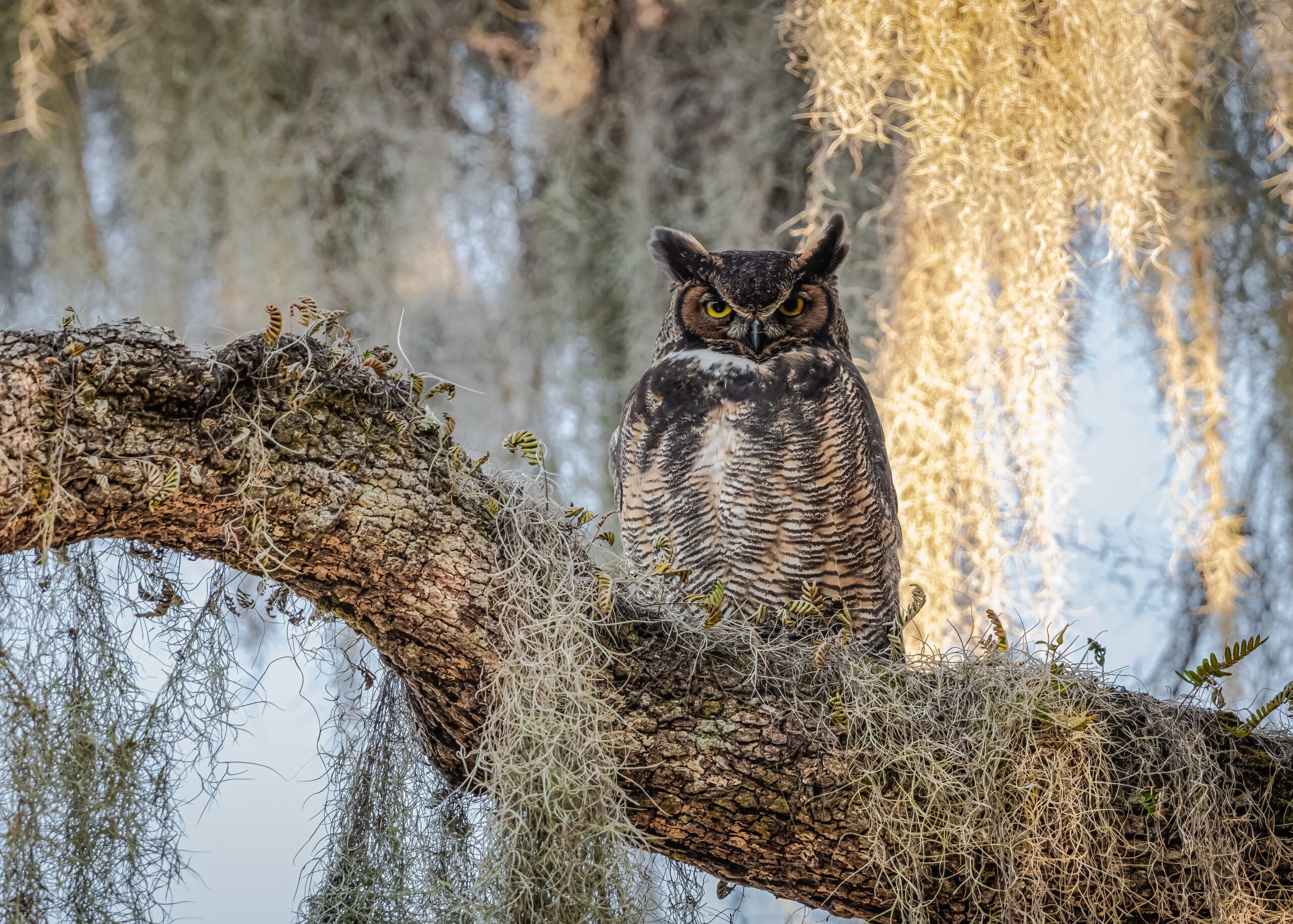
The Great Horned Owl is a nocturnal predator with excellent camouflage. Its mottled brown and gray feathers allow it to blend into tree bark. During the day, it often perches high in trees, where it’s almost invisible. Its large size doesn’t hinder its ability to disappear against the forest backdrop. It uses this advantage to stalk prey quietly at night.
Dead Leaf Butterfly
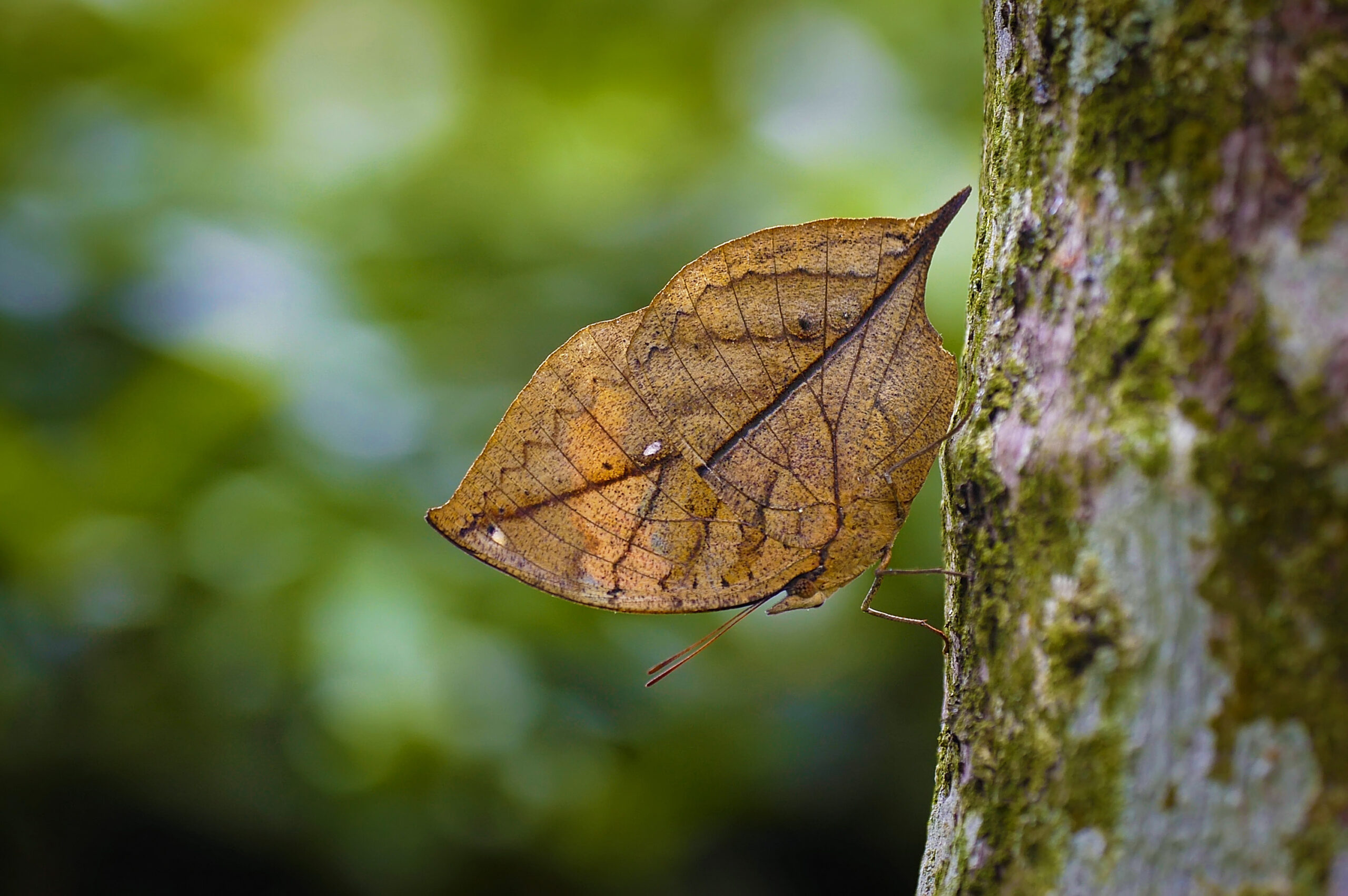
The Dead Leaf Butterfly is a master of disguise. Its wings look exactly like a dead leaf, complete with veins and spots. When it closes its wings, it becomes almost invisible on the forest floor. The brown, mottled texture of its wings helps it blend into fallen leaves. This ability protects it from predators and allows it to rest undisturbed.
Potoo Bird
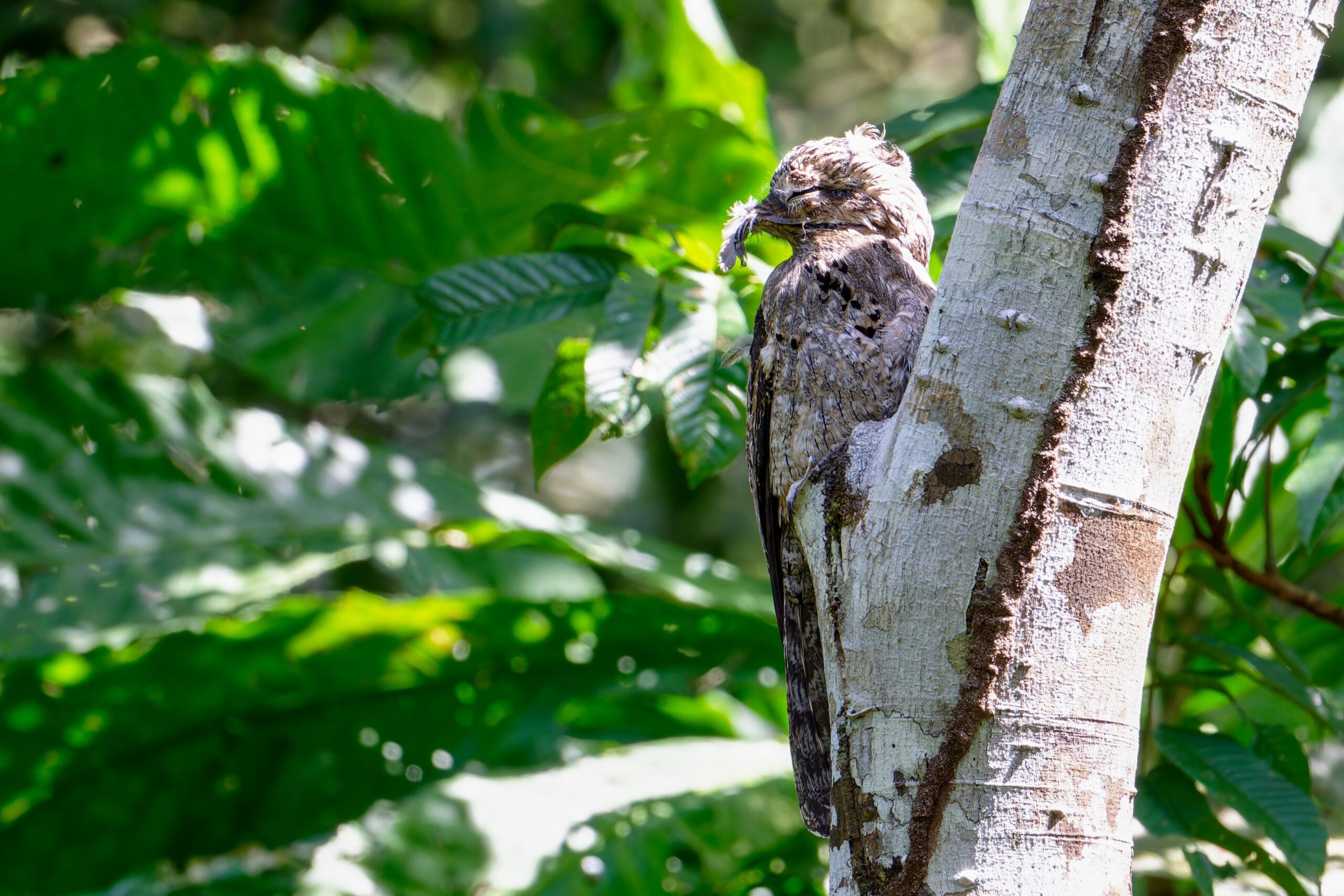
The Potoo Bird is known for its extraordinary stillness and perfect camouflage. It perches on tree branches, resembling a broken branch or stump. Its grayish-brown feathers blend perfectly with the bark. During the day, it stays motionless, eyes half-closed, making it nearly impossible to spot. This camouflage helps it avoid predators while resting.
Gaboon Viper
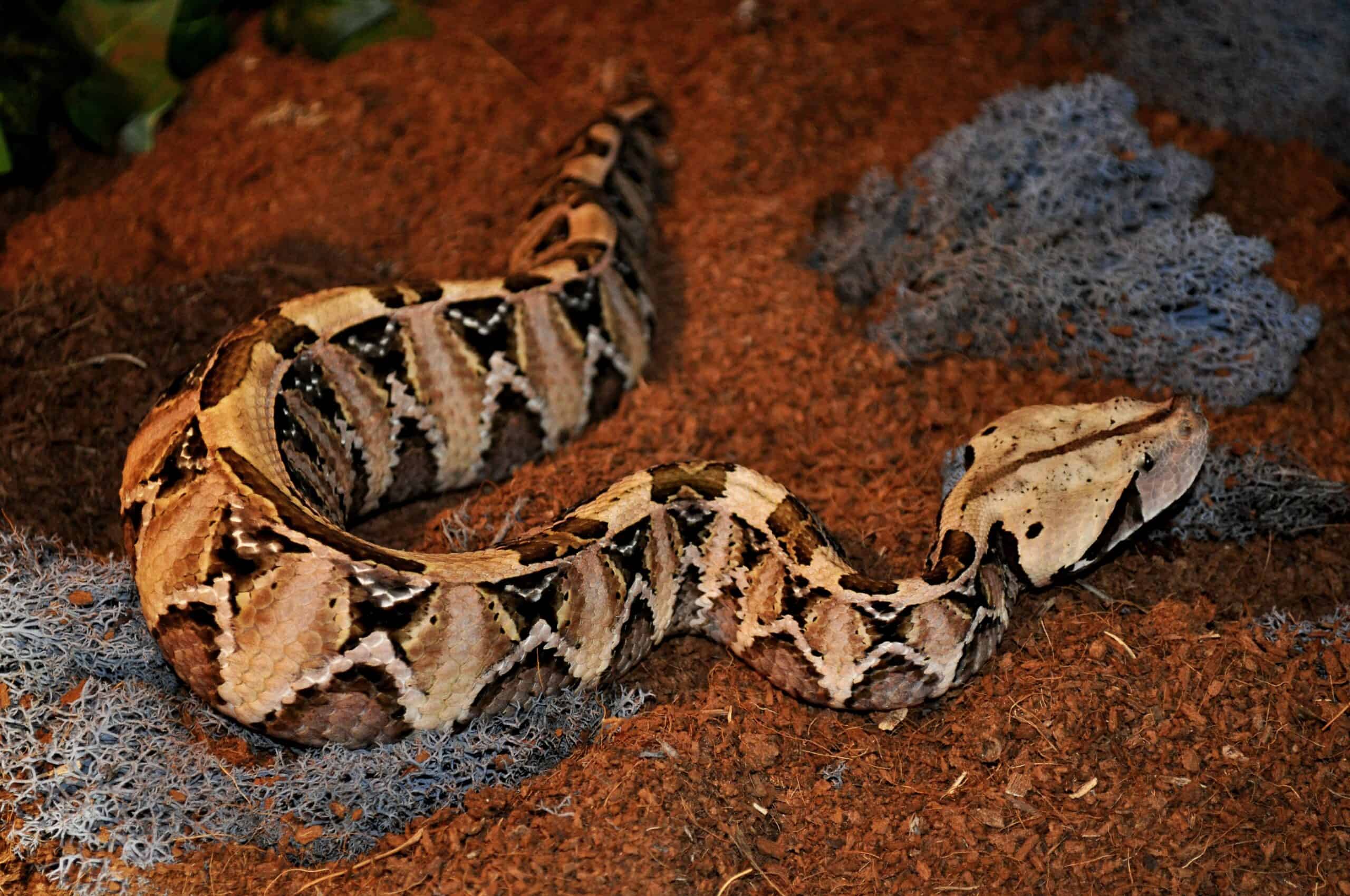
The Gaboon Viper is a venomous snake with incredible camouflage. Its brown and tan scales mimic the fallen leaves of the forest floor. The snake’s broad, flat body makes it look like a pile of leaves, making it hard to detect. It remains still while waiting for prey to pass by, striking quickly when food is near. This camouflage makes it one of the most dangerous predators in its habitat.
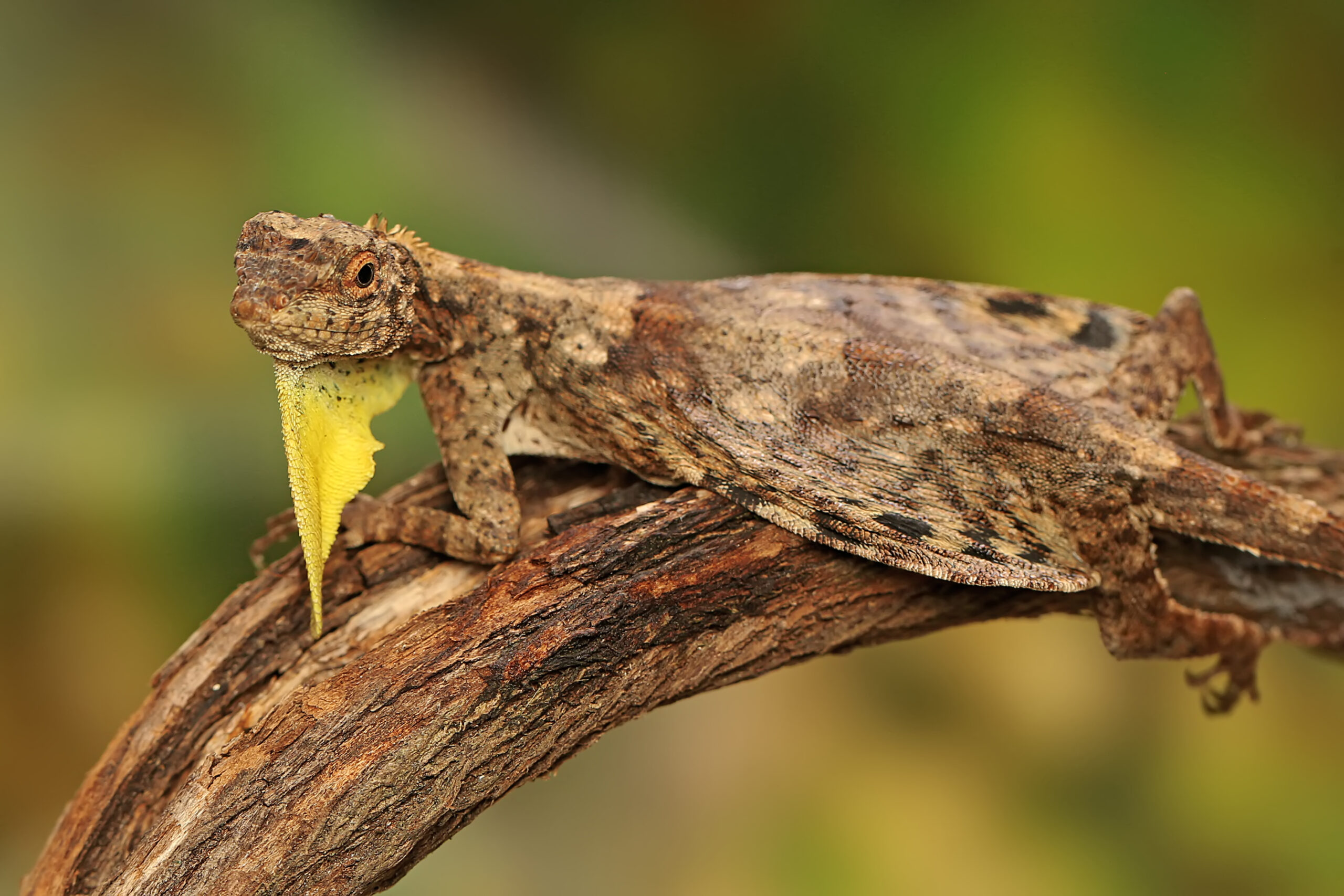
The Draco Lizard, also known as the Flying Dragon, uses its wings to glide between trees. Its body mimics the color and texture of tree bark. When it stretches its wings, they resemble leaves, allowing it to blend in as it glides. This camouflage helps it avoid predators and surprise insects during flight. Its unique adaptation makes it both agile and well-hidden.
Owl Butterfly
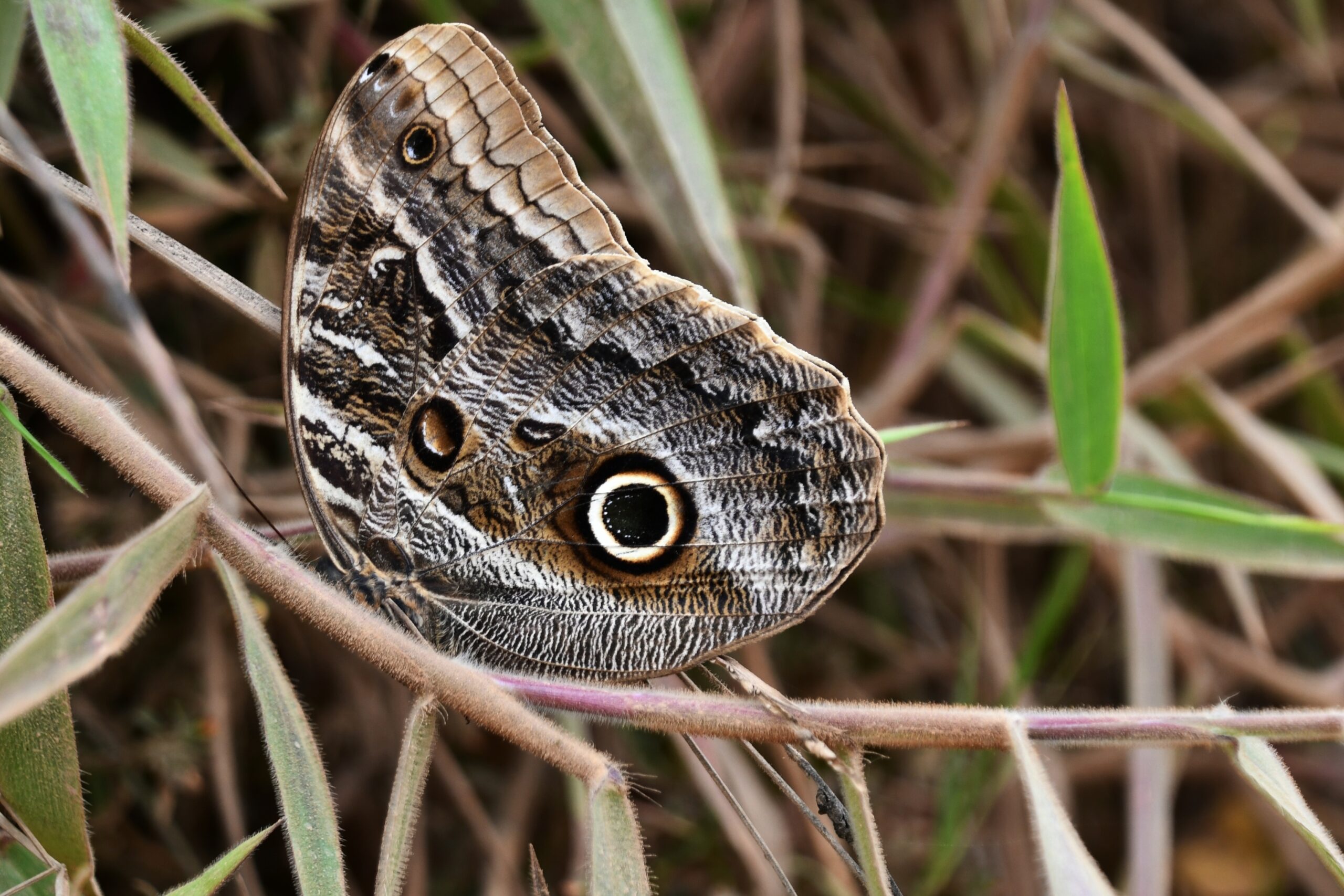
The Owl Butterfly gets its name from the large, eye-like spots on its wings. These spots resemble owl eyes, scaring away predators. Its brown and tan wings blend with the bark and leaves of trees, providing perfect camouflage. When resting with wings closed, it looks like a piece of tree bark. This disguise allows it to stay safe while it rests during the day.
Sri Lankan Frogmouth

The Sri Lankan Frogmouth is a nocturnal bird with an excellent camouflage strategy. Its plumage looks like dry leaves or tree bark. It perches on branches during the day, blending into its surroundings. The bird’s beak and body shape enhance its leaf-like appearance. It remains motionless, making it hard for predators to detect. This camouflage helps it avoid danger while resting.
Moss Katydid
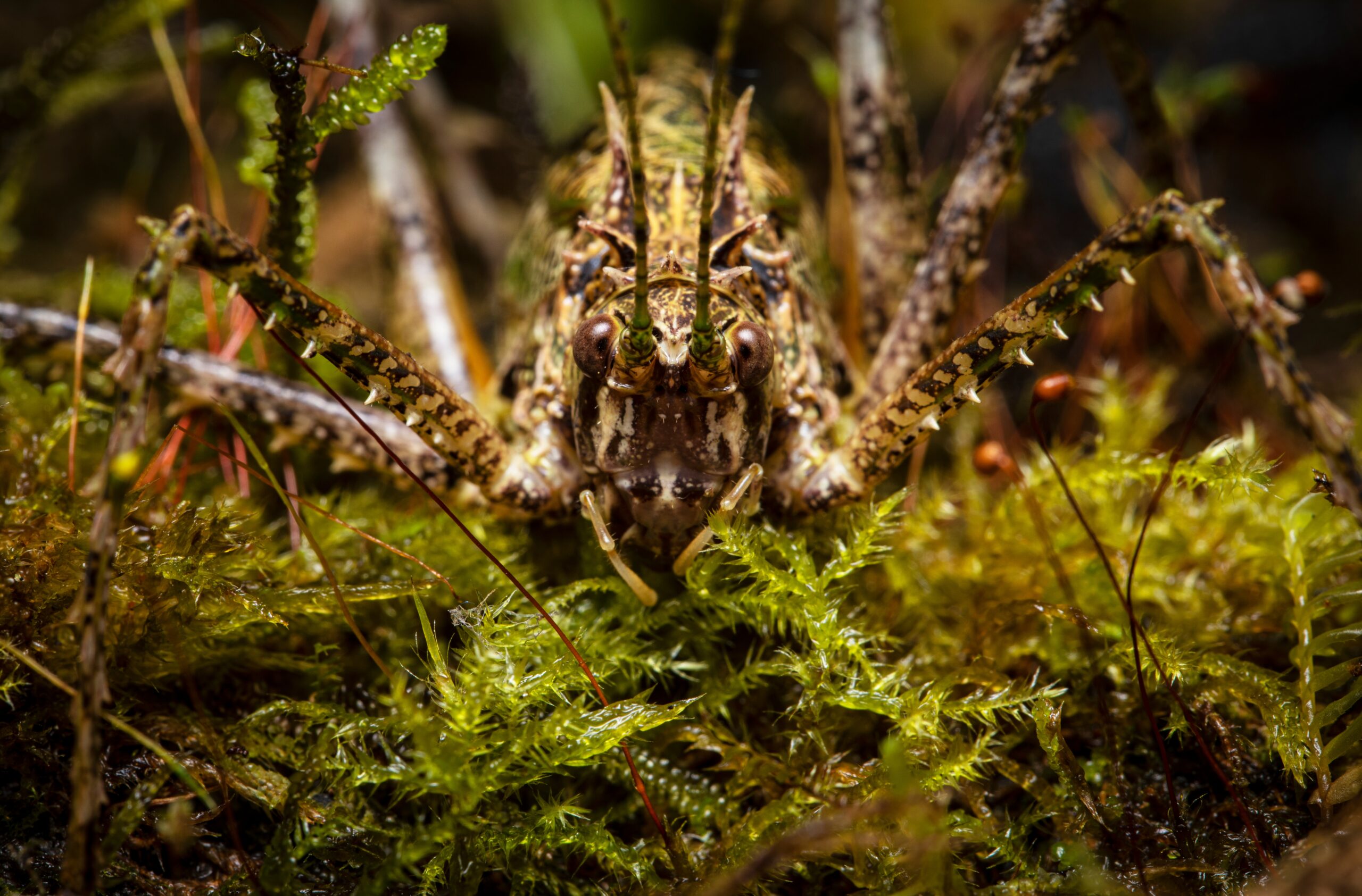
The Moss Katydid is an expert at blending into moss-covered environments. Its body is covered in green, leaf-like textures that make it nearly indistinguishable from the moss it hides in. Its long legs and antennae mimic the delicate structure of mossy branches. This insect remains motionless for long periods, relying on its disguise to avoid predators. Even up close, it’s challenging to spot this master of camouflage.
This article originally appeared on Rarest.org.
More from Rarest.org
Most Expensive Vintage Travel Posters Ever Sold

Vintage travel posters have become coveted pieces of art, fetching impressive prices at auctions. These posters are more than just advertisements; they’re historical artifacts that evoke the glamour of travel in bygone eras. Read More.
20 Keystone Species That Play a Crucial Role in Their Habitats

Keystone species are essential to maintaining the balance of their ecosystems. Without them, the structure of the habitat could change dramatically. Read More.
13 Unique Antique Clocks That Are Nearly Impossible to Find

Antique clocks hold a special allure for collectors and history enthusiasts alike. These timepieces, often crafted with extraordinary detail, offer a glimpse into the artistry and engineering of their eras. Read More.
